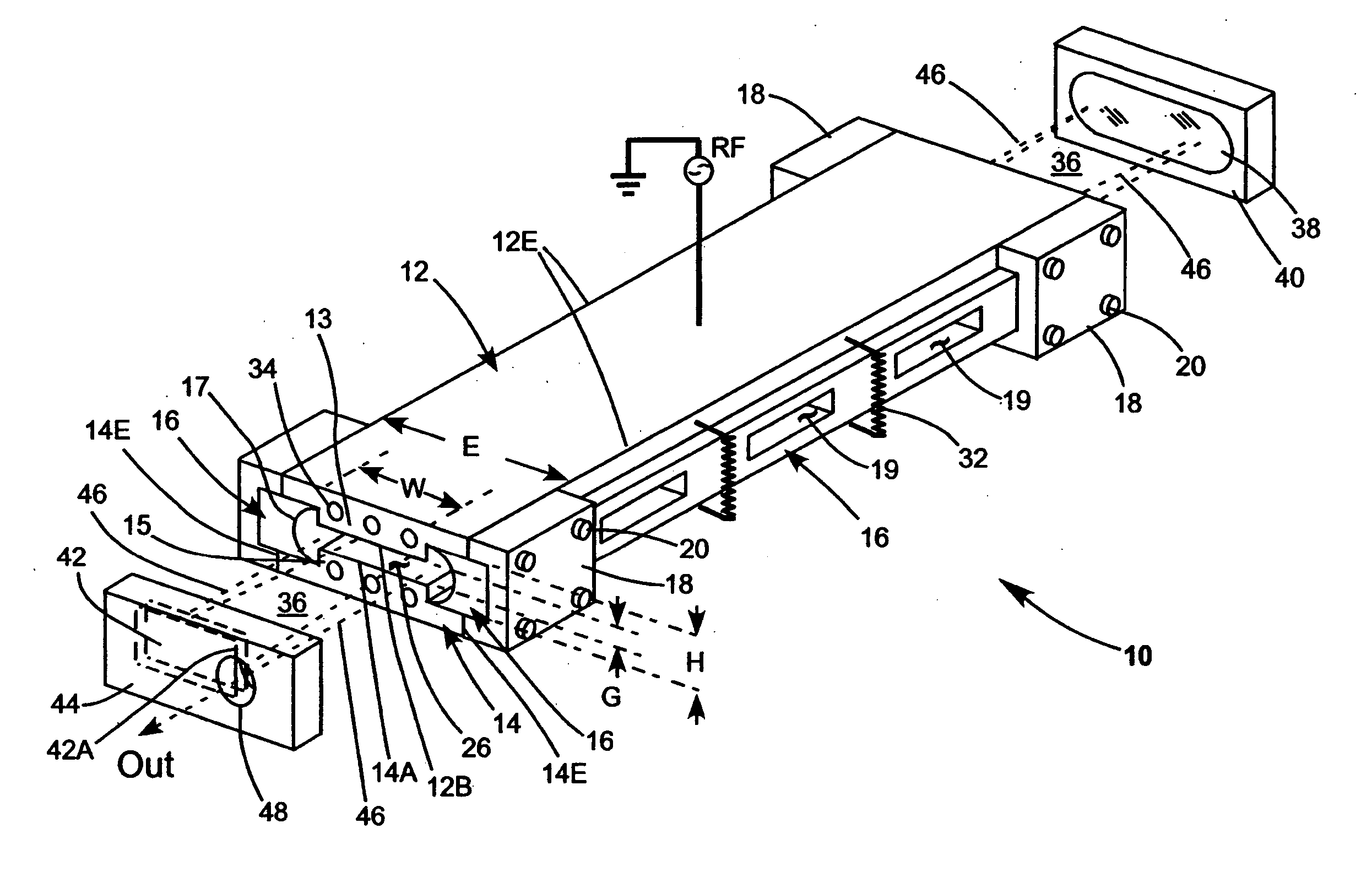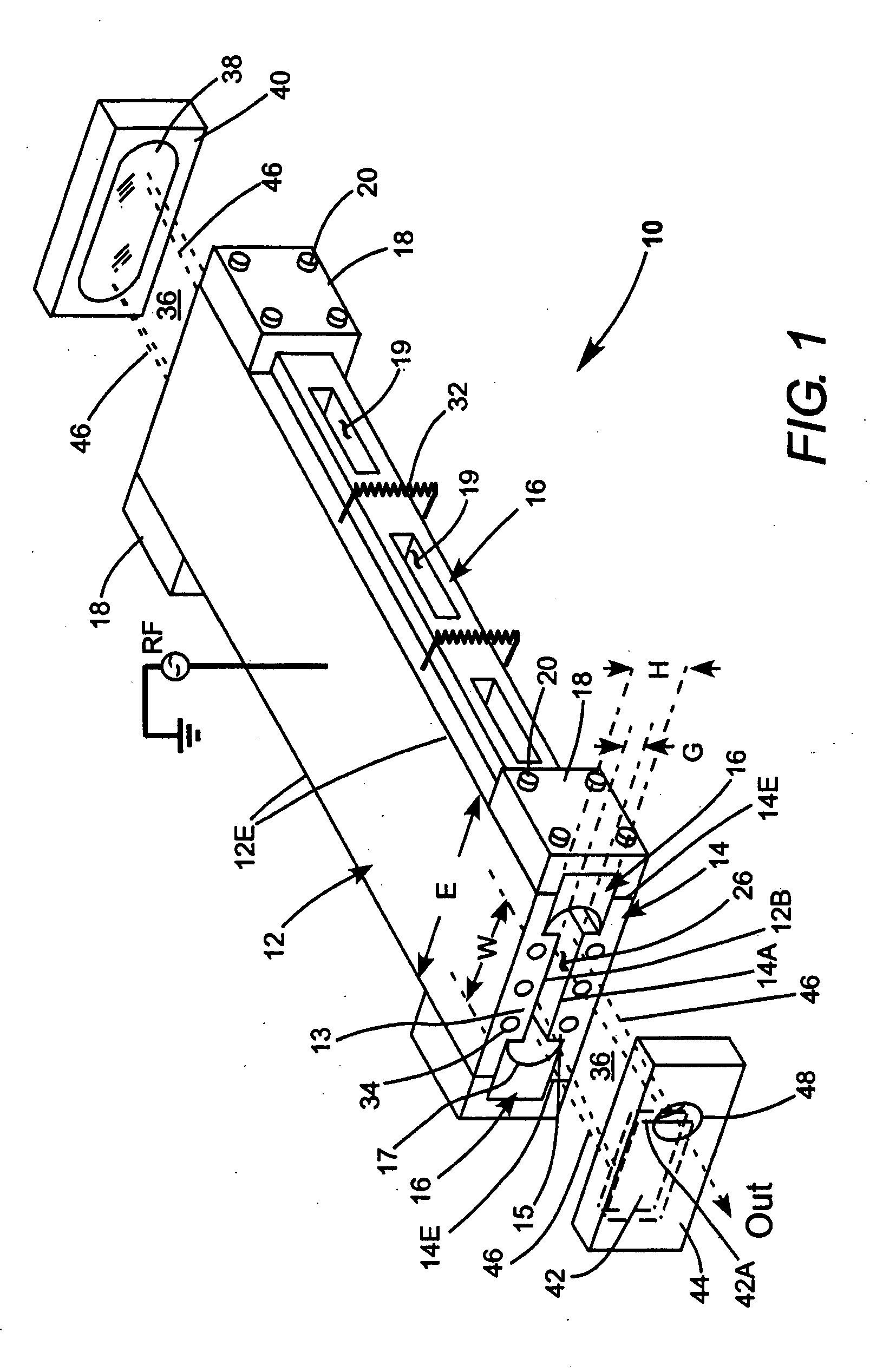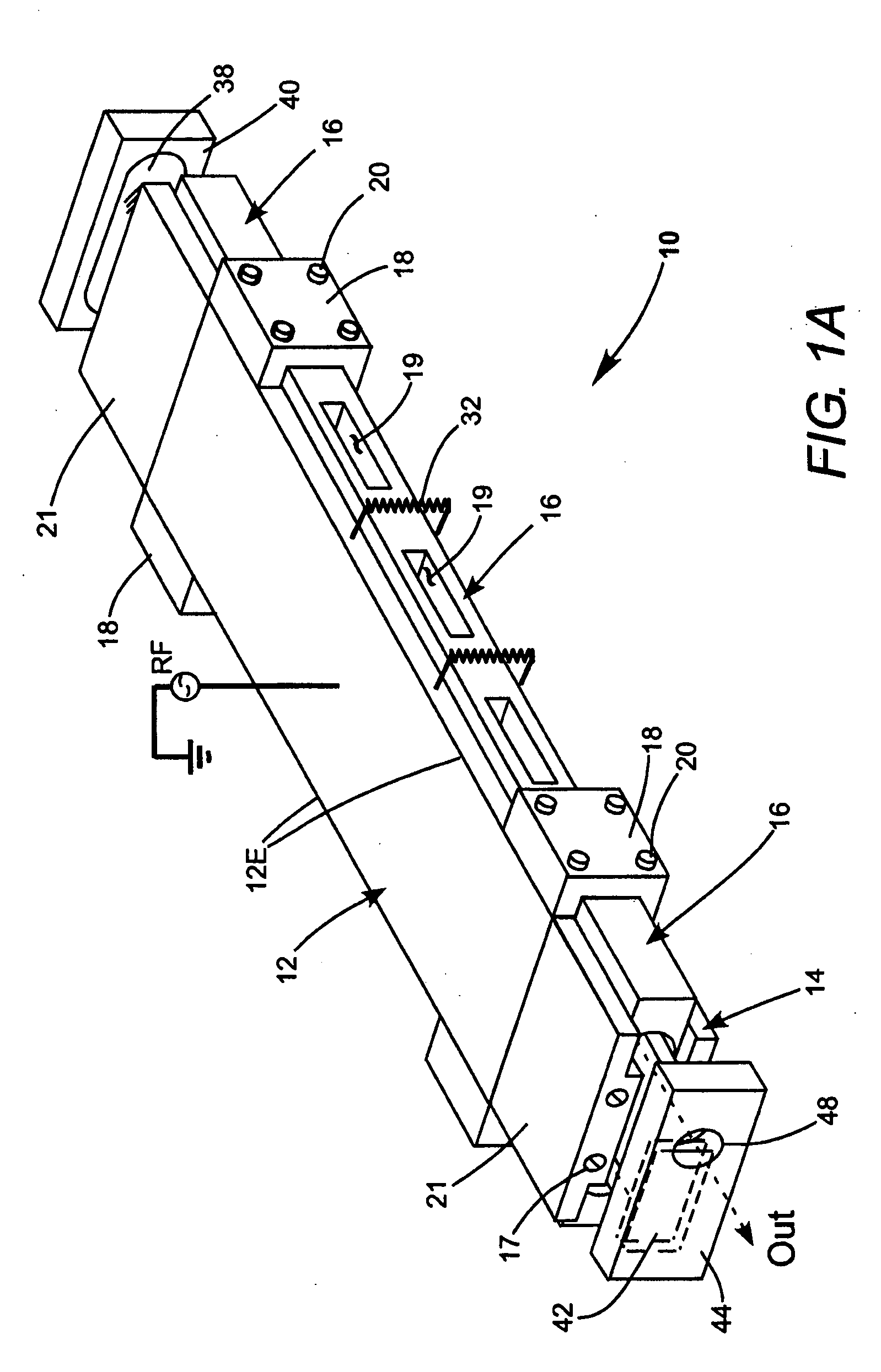Dielectric coupled CO2 slab laser
a co2 and laser technology, applied in lasers, laser details, active medium materials, etc., can solve the problems of reducing the resistance-capacitance (rc) time constant of the electrode impedance, reducing and increasing the resistance-capacitance (rc) time constant of the electrode impedance. , the effect of increasing the resistance-capacitance (rc) time constant of the electrod
- Summary
- Abstract
- Description
- Claims
- Application Information
AI Technical Summary
Benefits of technology
Problems solved by technology
Method used
Image
Examples
embodiment 70
[0032]FIG. 3 is a cross-section view schematically illustrating an embodiment 70 of a slab CO2 laser in accordance with the present invention integrated into a metal enclosure 82. FIG. 4 is three-dimensional view schematically illustrating laser 70 with enclosure 82 partially cut away. Those skilled in the art will recognize that laser 70 is similar to laser 10 of FIG. 1 integrated into a water-cooled enclosure. Accordingly, components with a common function in the two lasers are designated by the same reference numeral even though there may be some slight difference in shape therebetween.
[0033] Enclosure 82 is preferably formed from machined aluminum components and is electrically connected to ground potential. Interior 84 of enclosure 82 is filled with a lasing gas via a port 86, the tip 88 of which can be sealed off to seal enclosure 82 once lasing-gas filling is complete. Cooling channels 34 are provided in the base, sidewalls, and top of enclosure 82. Cooling fluid is directed ...
embodiment 140
[0042] Electrodes 122 and 124 can be defined as having a step height S, being the difference in thickness between the thin and thick portions of the electrodes. Ceramic insert has a thickness C, which is less than the step height S. Preferably the height of ceramic insert S is between about 25% and 75% of the step height. Discharge gap 26 has a width W determined by the width of thick portion 129 of electrode 124. There is a distance Y between the thin portions of the electrodes, which distance is equal to the step height S plus the height of discharge gap 26. The total electrode width is E. Thin portion 123 of electrode 122 has a width (W+X). Values of X and Y are selected to minimize the possibility of a discharge occurring between the thin portions of the electrodes. In one example of a laser 120 having a capability of 400 W output power, the length of electrodes 122 and 124 is 82.5 cm, the width (W) of discharge gap 26 is 55.0 mm. The discharge gap height (Y−S) is 1.2 mm, S is 3...
PUM
| Property | Measurement | Unit |
|---|---|---|
| distance | aaaaa | aaaaa |
| reflectivity | aaaaa | aaaaa |
| length | aaaaa | aaaaa |
Abstract
Description
Claims
Application Information
 Login to View More
Login to View More - R&D
- Intellectual Property
- Life Sciences
- Materials
- Tech Scout
- Unparalleled Data Quality
- Higher Quality Content
- 60% Fewer Hallucinations
Browse by: Latest US Patents, China's latest patents, Technical Efficacy Thesaurus, Application Domain, Technology Topic, Popular Technical Reports.
© 2025 PatSnap. All rights reserved.Legal|Privacy policy|Modern Slavery Act Transparency Statement|Sitemap|About US| Contact US: help@patsnap.com



